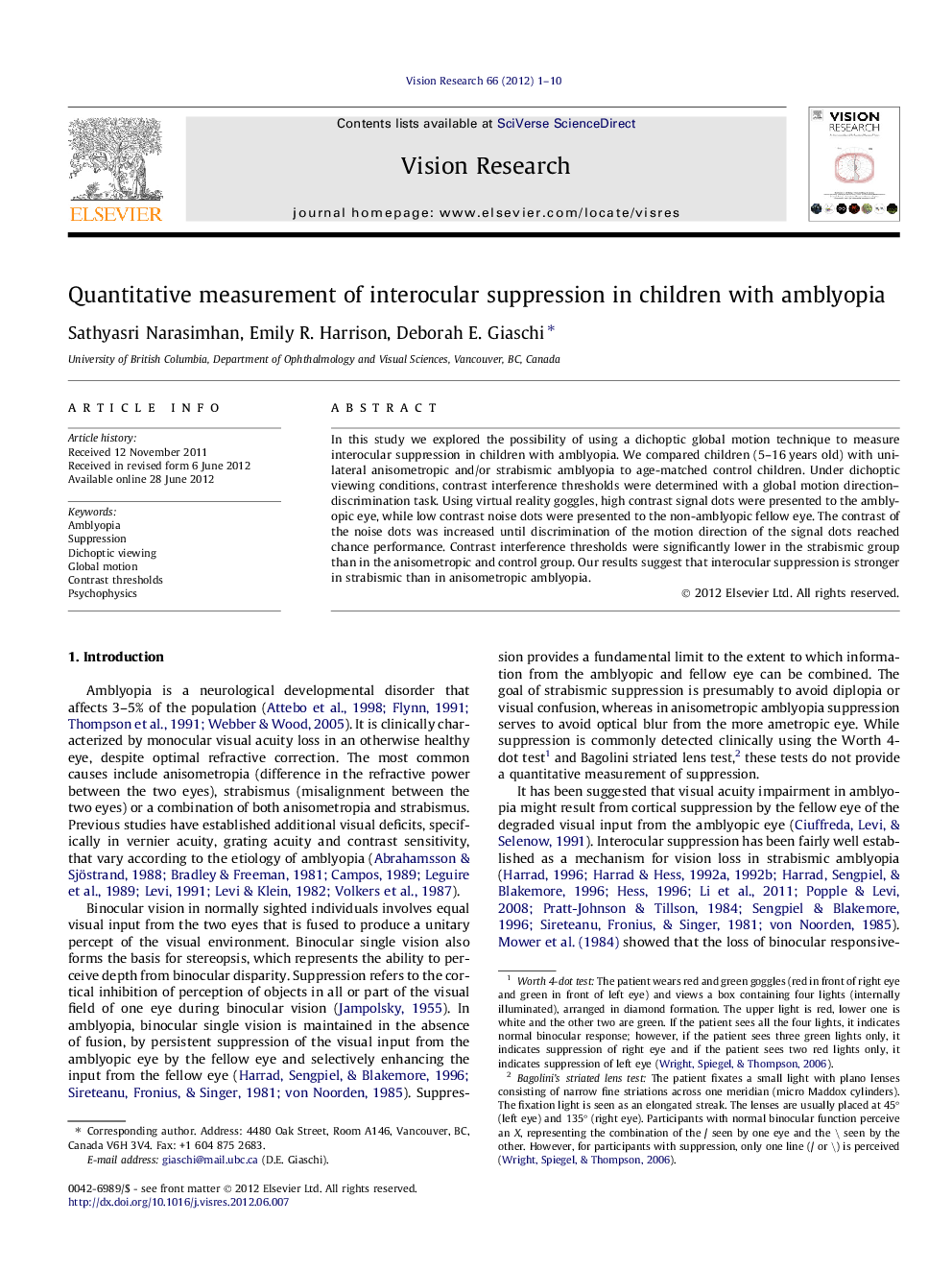| Article ID | Journal | Published Year | Pages | File Type |
|---|---|---|---|---|
| 4033980 | Vision Research | 2012 | 10 Pages |
In this study we explored the possibility of using a dichoptic global motion technique to measure interocular suppression in children with amblyopia. We compared children (5–16 years old) with unilateral anisometropic and/or strabismic amblyopia to age-matched control children. Under dichoptic viewing conditions, contrast interference thresholds were determined with a global motion direction–discrimination task. Using virtual reality goggles, high contrast signal dots were presented to the amblyopic eye, while low contrast noise dots were presented to the non-amblyopic fellow eye. The contrast of the noise dots was increased until discrimination of the motion direction of the signal dots reached chance performance. Contrast interference thresholds were significantly lower in the strabismic group than in the anisometropic and control group. Our results suggest that interocular suppression is stronger in strabismic than in anisometropic amblyopia.
► Dichoptic global motion can be used to quantify interocular suppression in children with amblyopia. ► Interocular suppression is stronger in strabismic than in anisometropic amblyopia. ► Interocular suppression is greater in children who did not respond successfully to treatment.
